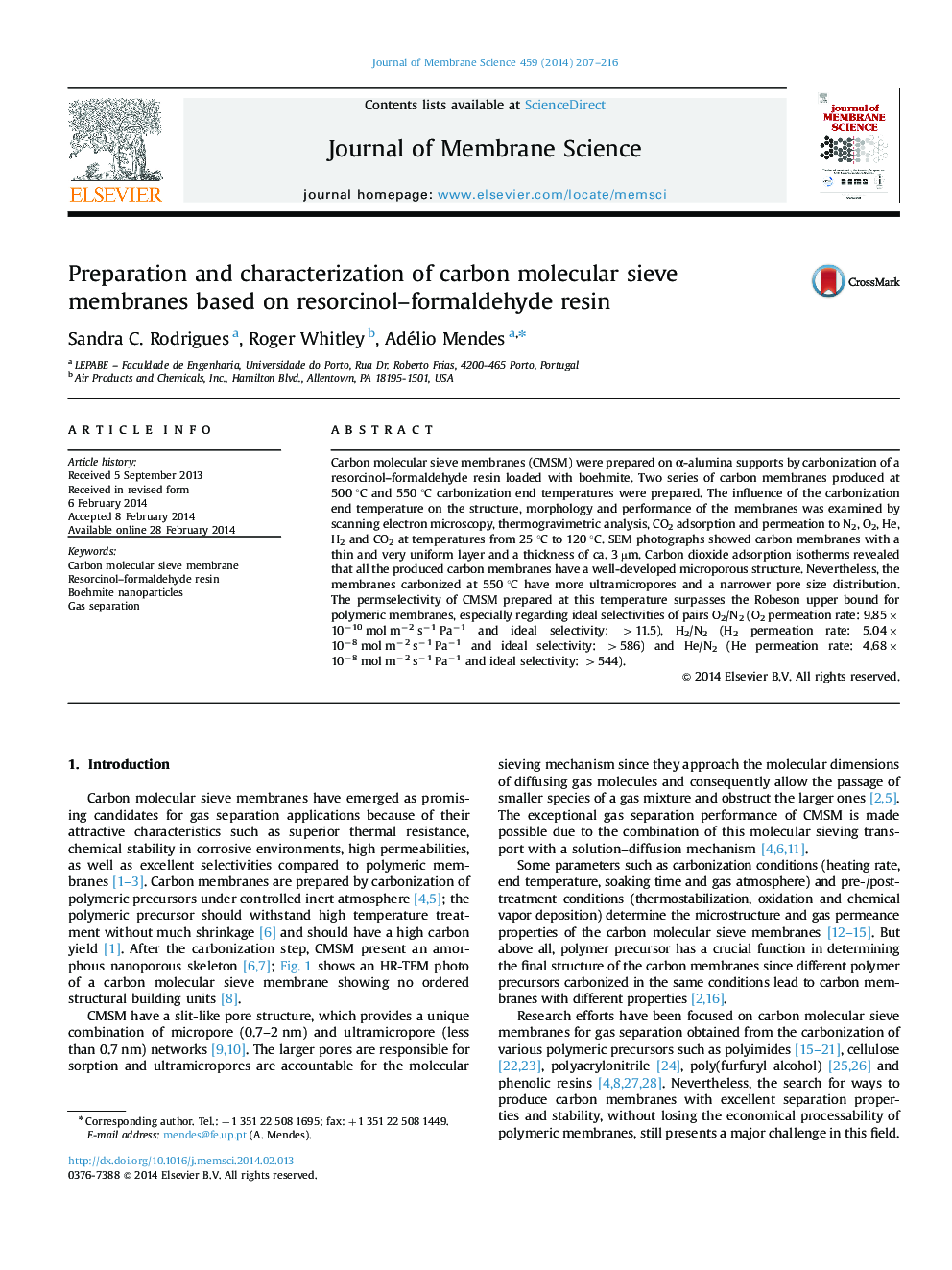| Article ID | Journal | Published Year | Pages | File Type |
|---|---|---|---|---|
| 7022222 | Journal of Membrane Science | 2014 | 10 Pages |
Abstract
Carbon molecular sieve membranes (CMSM) were prepared on α-alumina supports by carbonization of a resorcinol-formaldehyde resin loaded with boehmite. Two series of carbon membranes produced at 500 °C and 550 °C carbonization end temperatures were prepared. The influence of the carbonization end temperature on the structure, morphology and performance of the membranes was examined by scanning electron microscopy, thermogravimetric analysis, CO2 adsorption and permeation to N2, O2, He, H2 and CO2 at temperatures from 25 °C to 120 °C. SEM photographs showed carbon membranes with a thin and very uniform layer and a thickness of ca. 3 µm. Carbon dioxide adsorption isotherms revealed that all the produced carbon membranes have a well-developed microporous structure. Nevertheless, the membranes carbonized at 550 °C have more ultramicropores and a narrower pore size distribution. The permselectivity of CMSM prepared at this temperature surpasses the Robeson upper bound for polymeric membranes, especially regarding ideal selectivities of pairs O2/N2 (O2 permeation rate: 9.85Ã10â10 mol mâ2 sâ1 Paâ1 and ideal selectivity: >11.5), H2/N2 (H2 permeation rate: 5.04Ã10â8 mol mâ2 sâ1 Paâ1 and ideal selectivity: >586) and He/N2 (He permeation rate: 4.68Ã10â8 mol mâ2 sâ1 Paâ1 and ideal selectivity: >544).
Keywords
Related Topics
Physical Sciences and Engineering
Chemical Engineering
Filtration and Separation
Authors
Sandra C. Rodrigues, Roger Whitley, Adélio Mendes,
